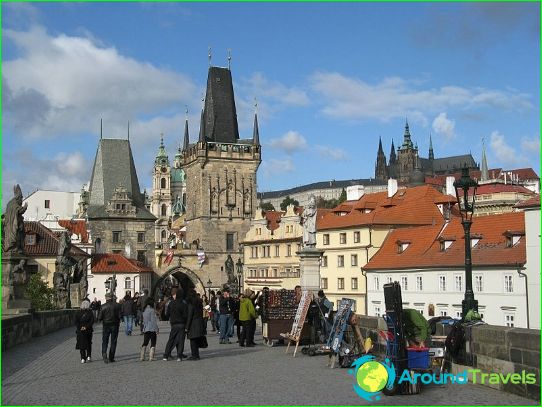History of Prague

Coat of arms of Prague
Prague is the capital and largest city of the Czech Republic with 1.3 million inhabitants (as of 2013). Prague is located in the northwestern part of the country on the banks of the Vltava River. Prague's Old Town is a UNESCO World Heritage Site.
Over its 1,300-year history, Prague has become the political, cultural and economic center of Central Europe. The city was not only the capital of the Czech state, but also the residence of two emperors of the Roman Empire, played an important role in the Protestant Reformation, the Thirty Years War, during both world wars.
The territory on which modern Prague is located by the end of the 1st century BC. was inhabited by Germanic tribes. At the end of the 5th century AD, during the great migration of peoples after the collapse of the Western Roman Empire, the Germanic tribes moved to the West, and in the 6th century the Slavs came here.
According to legends, Prague was founded in the 8th century by the Czech princess Libuša. In the 10th century, the city became the capital of the Czech state, and a market square was built here. At the beginning of the thirteenth century, Prague was surrounded by fortress walls to protect against enemy attacks.
Prague flourished in the fourteenth century during the reign of the Holy Roman Emperor and King of Bohemia Charles IV. He turned the city into an imperial capital, making it the third largest city in Europe (after Rome and Constantinople). The Emperor ordered the construction of a New City (Nove Mesto) adjacent to the Old City, and independently came up with an architectural plan. In July 1357 Charles IV personally laid the foundation stone of Charles Bridge.
Over the next two centuries, Prague developed as a merchant city, during this period many Gothic buildings were built. Economic growth continued until the 18th century, and in 1771 there were 80,000 inhabitants in Prague. Many of them were wealthy merchants and nobles who enriched the city with baroque palaces, churches, gardens and theaters..
The First World War ended with the defeat of the Austro-Hungarian Empire and the emergence of Czechoslovakia. Prague was chosen as its capital. The Second World War caused severe damage to Prague, however, the operation to liberate the capital on May 9, 1945 by Soviet troops took place without serious damage. In 1960, Prague became the capital of the Czechoslovak Socialist Republic and remained there until 1993. In 1993, after the division of Czechoslovakia, Prague became the capital of the new Czech Republic and an important cultural center of Europe..
Today in Prague you can see a large number of world-famous cultural attractions: Prague Castle, Charles Bridge, Old Town Square, Jewish Quarter. Since 1992, the vast historic center of Prague has been designated by UNESCO as a UNESCO World Heritage Site. The city boasts the largest museums, as well as numerous theaters and galleries. Its rich history makes it a popular tourist destination; more than 4 million tourists visit Prague every year..
Pictures of Prague
-
Coat of arms of Prague
-
Prague in 1493. Antique engraving.
-
Charles Bridge in 1840
-
View of Charles Bridge and Prague Castle
-
St. Vitus Cathedral
-
The Charles Bridge
-
Old Town Square: Town Hall and Tyn Church








